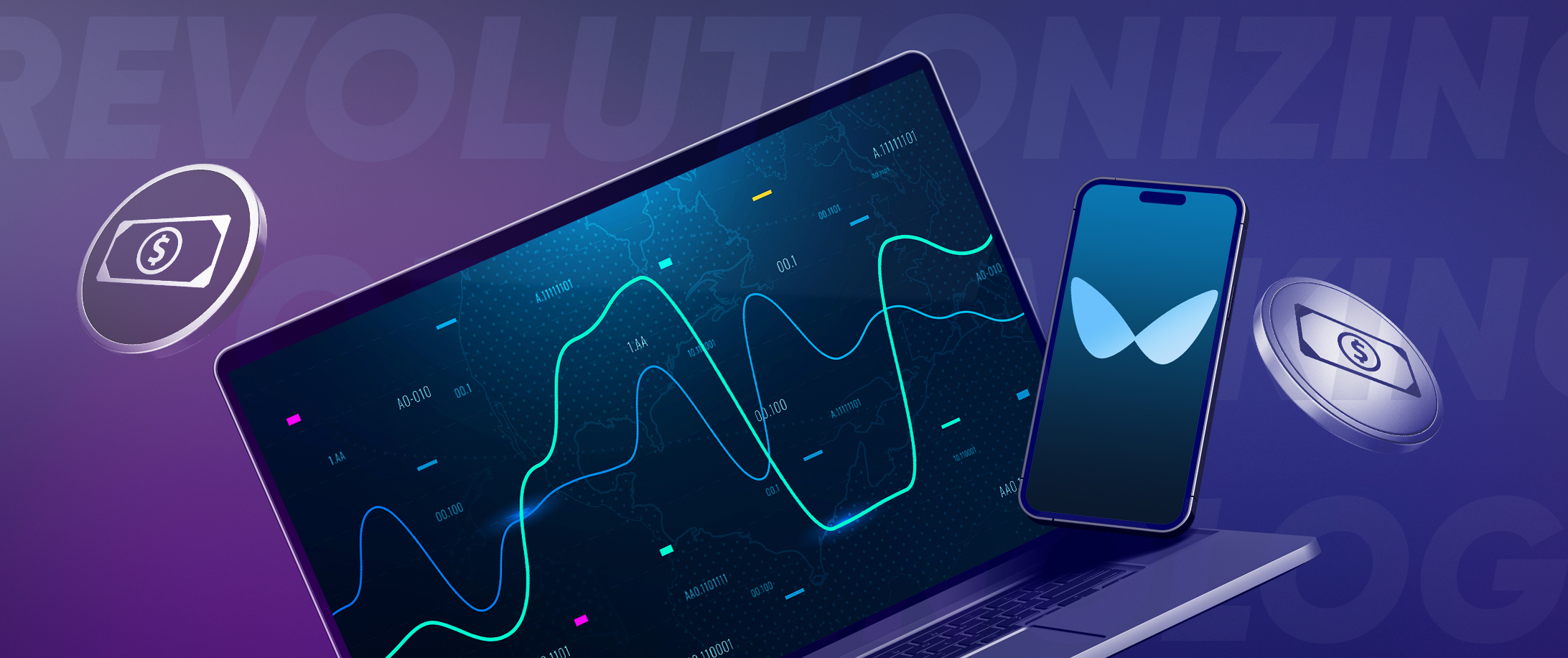Open banking is revolutionizing the way you apply for and receive loans by giving lenders access to your financial data directly from your bank. 📈💳 This innovative approach differs significantly from traditional methods used by high street banks, offering faster lending decisions and more personalized personal loan offers. One of the key benefits of this approach is the potential for more manageable monthly repayments. Read on to learn everything you need to know about open banking loans.
Understanding Open Banking 🌐💼
Open banking refers to a series of regulations that allow bank customers to share their financial data electronically and securely with authorized financial companies. The Second Payment Services Directive (PSD2) instituted open banking across Europe. In the UK, open banking is regulated by the Financial Conduct Authority (FCA) and the Open Banking Implementation Entity (OBIE).
Open banking is made possible through the use of application programming interfaces (APIs). APIs allow third-party providers to access your banking information if you authorize it. This gives you more options when applying for financial products like loans.
What Information Can Lenders Get Access to via Open Banking? 📊🔓
With your consent, open banking gives lenders read-only access to your financial information directly from your bank. This can include:
- Bank account transaction history 🏦📑
- Income and expenditure 💵🔄
- Regular outgoing payments, including direct debits 📆💳
- Credit card limits and repayment history 💳🕒
- Overdraft limits 🏦🚨
- Savings and investment balances 💰📈
- Full credit reports 📝🔍
- Credit rating ⭐📊
Accessing this data directly from banks provides a holistic view of an applicant’s personal finances. This allows lenders to better understand affordability when underwriting loans.
Why Does Open Banking Matter? 🤔💡
For consumers, open banking introduces more choice, convenience, and personalized services when applying for loans and other financial products. Specific benefits for customers include:
- Faster credit decisions as lenders can assess affordability faster with open banking data
- Ability to prove creditworthiness without relying solely on credit scores. This helps those with limited credit history access loans
- Loan offers tailored to your unique personal circumstances
- Easier comparison of personal loan options, both secured and unsecured personal loans, from multiple providers
Open banking provides consumers with a better understanding of the financial products available, helping them make more informed decisions.
For lenders, open banking improves underwriting accuracy. With direct access to an applicant’s financial information, lenders can streamline the application process and expand access to affordable credit. Partnering with an open banking partner enhances their ability to offer tailored financial solutions. This is a dramatic shift from relying on traditional credit reports and income statements alone.
Why Are Open Banking Loans More Flexible Than Traditional Loans?
Because open banking gives lenders greater insight into an applicant’s full financial picture, it unlocks more flexible lending options including:
- Loans for smaller amounts like £500 or £1000. Traditionally, personal loans started at around £2000.
- No minimum income requirements 🚫💰. Income verification happens instantly via open banking.
- Loans specifically for the self-employed or contract workers with irregular income streams.
- Potential for a lower interest rate due to lower default risks when lenders can accurately assess affordability.
- Extended loan terms up to 5 years so monthly repayments are smaller.
- No collateral is required as underwriting relies on bank transaction data versus physical assets .
- Fast access to funds. Some lenders provide funds on the same day.
- Monthly payments that can be tailored to fit your budget, enhancing financial planning and stability .
This flexibility, not often found with other lenders, allows those historically excluded from mainstream lending to access affordable credit through open banking loans.
Open Banking – How Does It Work?
An open banking loan follows these simple steps:
- Select a Lender: Choose an authorized open banking lender and start the loan application process.
- Authorize Access: The lender asks you to authorize open banking access to your financial information for underwriting. This is done through your bank’s secure interface.
- Secure Data Access: Once authorized, the lender gains real-time, read-only access to your account transaction data directly from your bank via APIs. 🔒
- Automated Checks: The lender runs automated affordability checks and credit risk assessments using your bank data, replacing the traditional manual process of gathering payslips and bank statements. 🧾
- Receive Loan Offer: Within minutes, the lender provides you with a loan offer tailored to your financial situation. Many lenders offer a loan calculator on their websites to help you understand the loan terms and monthly repayments.
- Funds Transfer: If you accept the offer, the lender will transfer the loan funds to your bank account promptly, typically within 1-2 days, compared to weeks with traditional loans. 🏦
The process is fast, convenient, and secure. At any point, you can revoke the lender’s access to your banking data.
Is It Safe to Use Open Banking?
Using open banking to share your financial data with lenders is just as safe as online or mobile banking. Strict protocols govern open banking, ensuring that your financial data is protected and your privacy is maintained. These measures make open banking safe for users:
- Financial data is accessed securely through bank APIs. Your bank login details are never shared. 🔐
- TLS encryption protects your data while it is transferred. 🛡️
- Lenders can only access your accounts on a read-only basis. They cannot move or withdraw funds. 🚫
- You must authorize each request to access your accounts for a specific purpose and timeframe. ⏳
- Only companies regulated by the FCA can provide open banking services, ensuring your data is secure.
- Advanced security systems and rigorously tested software safeguard your financial information against unauthorized access or cyber threats. 🛡️
- You can revoke permission to access your accounts anytime. 🚪
Look for the open banking logo to ensure a lender complies with data protection standards. The UK has the most mature open banking regulations globally, allowing you to apply for loans with confidence. 🇬🇧
Open Banking Lenders in the UK
Dozens of lenders now leverage open banking to provide personalized loans. Here are some of the top regulated loan providers:
- Lending Works: Loans from £1,000 to £25,000 for any purpose over 12-60 month terms. Quick transfer times. 🚀
- Oodle: Loans from £1,000 to £15,000 with flexible 3-5-year terms and no early repayment fees.
- Plend: Specializes in small, short-term loans from £50 to £750 over 1-6 month terms. No setup fees.
- Creditspring: Lets you borrow £500 to £5,000 and repay over 6-12 months. Builds your credit score.
- Moneyhub Loans: Loans up to £15,000 with 3-5 year terms. Low rates for limited credit.
- Mortgage Brain: Loans £5,000 to £40,000 over 10-25 years secured by property equity. 🏡
- Relendex: Borrow £1,000 to £25,000 over 1-5 years. Fast online loan application and funding. 🌐
- OpenWrks: Offers loans tailored to your open banking data from £50 to £10,000.
These lenders and many more providers who offer loans through this innovative approach can be found on the open banking directory, which lists all regulated providers. Comparison services like Money.co.uk let you easily compare personal loan offers.
Key Upsides of Open Banking
Implementing open banking provides significant advantages to loan seekers:
- Fast Decisions and Funding: Underwriting happens instantly, so approval times are minutes versus days or weeks. Funds are also distributed faster, often within 24 hours. 🕒
- Access to Credit with Limited History: Open banking gives those with minimal credit data access to affordable loans. 💳
- Flexible Loan Amounts and Terms: Borrow exactly what you need from £50 to £40,000+ over flexible repayment terms.
- Personalized Rates: Each applicant receives customized loan pricing based on their unique ability to repay. Rates as low as 2.8% APR are possible. 📈
- Build Credit: Responsible repayment of an open banking loan helps you establish or rebuild your credit file.
- Convenience: The entire application process happens online via your mobile. No need to present documents. 📱
For those historically excluded or penalized due to thin credit files or past issues, open banking provides new opportunities to access credit.
Downsides of Open Banking
While open banking brings significant advantages, there are some drawbacks to consider:
- You must share your financial data, which some may view as invasive. However, your consent is required for each specific use. 🛡️
- Technical errors in the APIs could temporarily disrupt access to your banking information and cause application delays. However, this risk is minimal. 🛠️
- If lenders rely too heavily on transaction data, small changes in spending could impact your loan eligibility. But lenders should take your complete profile into account.
- Not all lenders offer open banking yet, limiting its use. However, adoption is rapidly increasing. 📈
- Consumers need education on open banking. Misconceptions exist around privacy and security.
Overall, open banking brings more positives than negatives for both consumers and lenders. The convenience and credit access advantages that open banking enables make it worth embracing.

Open Banking Services Examples
Beyond loans, open banking is transforming many financial services including:
- Bank Account Switching: Instantly switch bank accounts via open banking APIs with no downtime in access to your funds. 🔄
- Money Management Apps: Aggregate all your online account information in one place to analyze spending habits and track budgets. 📊
- Financial Planning: Build savings and investment strategies leveraging analysis of your transactions and account data. 💡
- Online Payments: Initiate payments directly from your bank account without using debit or credit cards. 💳
- Account Alerts: Get custom notifications on account activity like large expenditures or suspicious transactions through open banking. 🔔
As consumers grant access to their data, more innovative services will emerge. Open banking ultimately gives you control over your financial life.
Revolutionizing Open Banking Technology
Several technological trends are driving further online banking innovation including:
- 5G Networks: Provide the speed, bandwidth, and low latency required for real-time data access anytime, anywhere. 📶
- Enhanced Customer Identification: Methods like facial recognition and document scanning build trust while maintaining privacy. 📸
- Machine Learning: Analyzes consumer data to provide personalized financial advice and product offers. 🧠
- Cloud Computing: Offers the reliability and scalability to manage huge transaction datasets cost-effectively. ☁️
- Blockchain: Supports data transparency and accuracy across financial networks. 🔗
- Cybersecurity Advancements: Prevent fraud and cybercrime to protect consumer data. 🛡️
Together these revolutions ensure open banking is flexible, user-friendly, and secure as its applications expand.
The Future of Open Banking
Many experts see open banking reaching beyond just financial services in the future. Possible applications include:
- Retailers: Access your bank data to provide personalized offers and discounts when you shop online or in-store. 🛒
- Utility Companies: Tailor payment plans to your income and spending patterns via open banking. 💡
- Governments: Use open banking to deliver benefits, subsidies, and tax refunds directly into your bank account promptly. 🏛️
- Insurance: Property and motor insurance premiums are calculated using your actual bank transaction history rather than broad demographics. 🚗🏡
- Employers: Utilize your bank data with consent to offer wages, advances, and personalized benefits. 💼
For consumers, this means even more tailored products and services customized precisely to their needs. It also ensures critical services can be delivered rapidly when needed most.
While open banking is still in its early phases, the potential to transform finance and beyond is clear. As technology and data security continue to advance, open banking looks set to define the future of highly personalized digital services. 🚀


